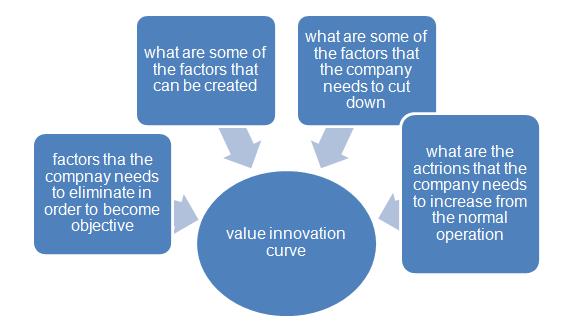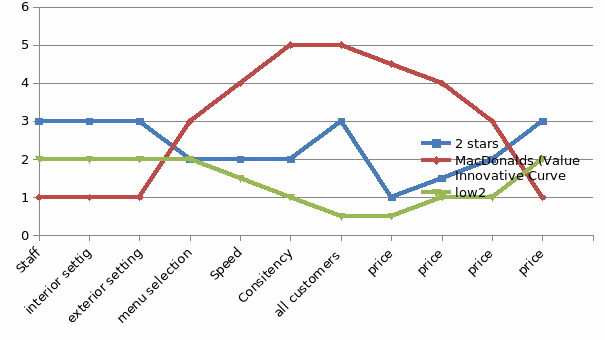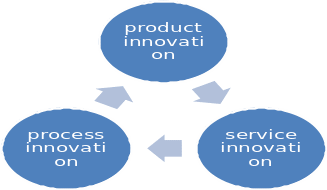Innovation and Technology
A popular statement in the field of innovation and technology in organisations reads that “innovation is not the same as technological advances”. It is noted that the two terms are totally different when applied to business and organisations (Christensen 1997, p.12). Analysts are of the view that innovation is a term used to describe creativity in a business.
This is creativity of the business which is targeted at capturing the attention of the consumers in the market. Technology on the other hand is a mechanism that allows or helps to catapult the innovations initiated on any product on entry into the market (Terkel 1991, p. 14). For example, technology can be used to target a particular segment of consumers in the market.
It is a strategy that can help a company to expand its range of products. Therefore the advancement of the two concepts in the organisation or advancement of one concept at the expense of the other does not mean that the two are tied together.
Having analysed the meaning of these two terms, the author of this paper is now going to provide an insightful analysis of the two concepts by assessing how they affect business operations in a given organisation.
Innovation plays a significant role in the business processes. It is innovation which introduces new ideas initially generated by technology into the market. Innovation takes those valuable ideas and applies them in the market.
Thus, technology can be referred to as an aspect of innovation through which new techniques that touch on the services and products in the market are introduced. It is no wonder then that business scholars often associate business success with innovation (Terkel 1991, p. 16).
Innovation has become an important aspect of business organisations in the world today. There are many studies and research carried out today and which are aimed at improving the various products and services associated with the company. This has led to the emergence of innovative marketing strategies.
For example, researchers in their efforts to experiment on the correct mechanisms to boost business have stumbled upon valuable ideas that they did not intend to get in the first place.
These ideas have turned to innovative marketing strategies that have been used to catapult the business organisation to the higher heights in the market. Therefore, research has adopted trial and error methods to boost the market using the innovative ideas.
The value of innovation to any business in contemporary society cannot be downplayed. Without innovation, the business will be trapped in a ‘Red Ocean’ instead of what Chan & Mauborgne (2005) calls the “blue ocean”. With an appropriate marketing strategy, an organisation can outdo the competitors using strategic innovations and by putting the right mechanisms in place.
Today, the market is the battle field and competition on the other hand is the bloody battle being fought out and which requires businesses to adopt effective strategies in order not to lose the war. Loss of this battle will land the business in the red ocean (Chan & Mauborgne 2005).
It is noted that in most cases, opponents in the market adopt similar strategies that at the end of the day cancels or neutralises each other. A highly innovative strategy should be adopted to counter this in order for the business organisation to remain in the blue ocean. The author notes that competition leads to red oceans as organisations battle it out for the limited profits.
A break through is achieved but not from fighting the competitors head to head but from creating a fire wall or what the business scholars call the ‘value innovation’ (Moore 1999).
The magnitude of the technology that a business puts in does not matter so much. On the contrary, what matters is the value of the innovation which finally promotes the business as a whole. Technology comes in handy in determining the type of innovation to implement in the business.
At this juncture, it is important to note that the innovation process in any given business organisation involves very important steps that leads to new products and services. This promotes the growth of business at a higher rate as opposed to technology. However, technology plays an important role in the innovation strategy. This is a model that on its own that requires multiple components to achieve the goals of the innovated strategy.
Technology plays a significant role in this model as it satisfies the need at hand (Chan & Mauborgne 2005). In other words, those involved in the implementation of the innovation are also counter checking the feasibility of the new strategy.
A prototype is put into action and this is followed by the appropriate technology to achieve the desired objectives. At this point, the author is confident that the reader fully understands the two principles and how they relate to each other and promote business processes.
It is important to provide some practical examples as far as innovation and technology in business is concerned. Such practical examples will make it easy to understand the arguments provided in this paper. Most entrepreneurs have always contended that technology and innovation are the same when it comes to succeeding in the bloody battle field that is the market.
As the author has put it earlier in this paper this is not entirely true. For instance Henry Ford backed this argument by noting that during his invention of the Ford car he did not make efforts to promote the product in the market.
Later this theory was to be shattered as Ford’s idea was used by other innovators who used new strategies that outdid the original creative work of Ford himself. The additional innovations catapulted the company to greater heights hence its success today (Terkel 1991, p. 28).
Another difference that comes to mind when analysing the two concepts is the impetus that promotes innovation. One objective of innovation is to acquire new knowledge or what is commonly referred to as technology. Technology helps innovation to expand the business processes.
For example whenever there is a new technology it is adopted by businesses through innovative strategies. A case in point is the invention of Kevlar. This author notes that when this product was invented, the market was flooded by thousands of unique products derived from the material.
Value Innovative Concept
Value innovative concept is a strategy that can be used by the business organisation to find its way to the top. This is through the implementation of different creative ideas that correlate with each other for the benefit of the business plan.
It is ideal for the blue ocean approach which creates an environment that is conducive for the business organisation (Trott 1998, p. 3). Under normal circumstances, the concept is driven by several key strategies that ensure that the business stays put in the blue ocean. Some of the key components include the ones listed below:
- Avoiding head to head competition with other businesses in the market
- Value curves
- Six path analysis
- ERRC concept (Eliminate Reduce Raise Create)
The concepts above illustrate some of the strategies that value innovation relies on to evaluate the feasibility of different creative ideas put in place to make sure that business operations remains competitive in the market.
The concepts are used by the business managers and planners to cross- check the value of the business to both the buyers and the company at large. The author of this paper will dwell on two concepts among the various identified above. These are the ERRC and the value innovative curve concepts.
ERRC Concept
The concept touches on four action frameworks which are meant to ensure that the company adopts the right actions when managing its operations. These are elimination, creation, reduction and rising. These are constructed based on the dire need of the company to initiate new concepts in the market (Trott 1998, p.9).
The four frame- works; approach is analysed below in this paper. The framework is usually used to draw the value curve that will help the business to effectively sail in the blue ocean.
The four frame- works are approached by answering several questions that are necessary to effectively and successfully drive the point home. Each action has its own question that needs to be answered. This is as illustrated below:
Elimination
Question: What are some of the factors and processes that the company needs to eliminate in order to avoid being subjective?
Reduction
Question: What are some of the factors and processes that the company needs to reduce?
Raising
Question: What are some of the actions and processes that the company needs to add on top of the normal operations?
Creation
Question: What are some of the factors and processes that can be created today and which the company has never created before?
If the above questions are answered or addressed effectively, the methodology will help the business planners to strategise for the value cost trade off that will help in fighting for market space.
At this juncture, the author of this paper is going to illustrate how the value innovation curve can be used in a contemporary competitive market.
Value Innovative Curve
Competition normally takes place when the product has a substitute or can be substituted in the marker and also if a business operates in the same industry as other business organisations. Business scholars contend that there is always a space in between the substitutes which can be enhanced with the help of value innovation (Miner 1997, p. 41).
For example if a business wants to venture into the transport industry, it can create a market of its own by adopting strategies such as do it yourself instead of hiring a transportation company. It can decide to choose between the contractors or taking the initiative and going to the stores on its own. The value innovation achieved can be analysed using the chart below:
Figure 1: Value Innovation: How the Key Questions Can Lead To Innovative Curve

Adapted from: Hutlink et al. 2000
When the four questions are answered accurately, innovative curve will be acquired to promote the best interest of the business. The curve will assist in implementing various processes that exists in the marketing environment.
Such processes include scrutinizing business in the same category using the same linage, analysing those who are buying the commodity as well as the kind of products and services that are offered in the marketing environment.
For companies that are in pursuit of similar business objectives, the battle lies within the innovative curve (Wilhelm 2004, p. 27). This is the way to go in order to avoid or avert a head to head competition in the market. This can be achieved by reading the minds of the customers in an attempt to know what makes them shift within groups.
Value innovation also closely examines the chain or range of buyers ranging from those using the commodity, those who are buying as well as those influencing the product or service in the market. Most customers prefer a binding solution when buying and value innovation is out to explore this solution for the customers.
It will finally unleash the right products and services for the customers (Wilhelm 2004, p. 31). The figure below shows the innovative curve that is used to approach the market:
Figure 2: The Innovative Curve that is Used in Approaching the Market Space

Adapted from: Hutlink et al. 2000
Tools for Innovation
Innovation is a sophisticated weapon that entrepreneurs ought to have in their marketing arsenal in order to boost their business. They can innovate their way to the top by using various tools.
Innovation encompasses different types of processes that range from technology and product as well as process and service innovation which is among the first that entrepreneurs should adopt (Baron & Shane 2005). The author of this paper will adopt the product, process and service as an innovation framework.
Analysis of Product, Process and Service Innovation
It is to be noted that innovation is a mandatory strategy for any given business. It is not an optional objective but rather a compulsory entity that is employed to run the business hence a tool for business entrepreneurship (Moore 1999, p. 9). Innovative products and services attract customers, vendors as well as the other important stakeholders. Competition is suppressed by acquiring a large number of customers.
The three elements are then subjected to a four level evaluation mechanism which can be used to tell the success of the business. The four levels that innovation applied in process, product and service is subjected to include standards, specialized, extraordinary and finally the breakthrough (Moore 1999, p. 12).
Products and services are supposed to keep up with the pace of the constantly changing business environment. Standard is the strategy used to achieve this motive. Standard analyses the quality of products and services in the market and then responds using a unique quality to outdo the other products and services in the market. Processing is the key to the realisation of the envisaged standards in the market.
Depending on the prevailing conditions, specialisation comes in handy in adapting to a particular segment in the market. A particular group is targeted by products and services that the other company or business cannot offer. This is ideal for entrepreneurs who identify a dire need in the market and responds to it immediately by innovatively producing the required specialized products and services in the market.
Extraordinary comes into play by providing unique elements in the market which cannot be matched by the opponents. However these are vulnerable to attacks hence the need for a breakthrough (Crawford & Benedetto 2003).
Breakthrough is the final step in the innovative venture whereby the entrepreneur has already acquired a market segment regardless of the stiff competition in place. At this point, there are many competitors who are not equal and this places the business at a strategic position to study the market effectively.
To avoid operating from a precarious position, the entrepreneur explores other innovative avenues in the market before the other competitors have responded (Crawford & Benedetto 2003).
Entrepreneurial Lessons
Entrepreneurs have learnt a precious lesson through the process, product and service innovation. To remain active in the market, the entrepreneurs have learnt to minimise any defects arising from the production process.
This includes minimizing the process cycle by cutting down on the waiting hours and any other customer services. The global market is now faced characterised by stiff competition and the entrepreneurs have no choice but to embrace the available innovation to remain in the blue ocean (Hutlink et al. 2000).
Another important lesson that individuals have to take into account is the need to enhance the supply chain. After the process and product innovation has been effected, there is need to work on the supply chain innovation. This will be efficient if the best practices are initiated into the business.
This is for example the use of appropriate technology in the supply chain. Customers need to be provided with alternatives and the lesson learnt from the above experience allows the entrepreneur to fulfil this need.
A very important lesson for the entrepreneurs is the application of benchmark against industry standards in an attempt to evaluate their business and compare it with other businesses operating within the same field.
This idea is actualised by analysing financial details of other companies and even investigating the opinions of the suppliers and customers. The idea here is to help the company remain focused and reduce defects and other practices that are not of any help to the business itself (Henria 1991, p. 29).
It is important for the entrepreneurs to decide on which factors to embrace in the competitive market. This helps the entrepreneur to avoid taking a catch up position in the market place. This is a very dangerous situation that can land the business in the red ocean after it is defeated in the battle. An entrepreneur should analyse the battle field before embarking on the war.
The last lesson that an entrepreneur should learn is the fact that product, process and service innovation are continuous processes that need constant reforms and advanced exploration. This is in order to tap into the future potentials (Hutlink et al. 2000). There are different innovation cycles which are based on the above processes. This is well illustrated below:
Figure 3: Lessons to the Entrepreneur: Innovation is a Continuous Process

Adapted from: Henria 1991
References
Baron, R & Shane, D 2005, Entrepreneurship: a process perspective, McGraw-Hill, Boston.
Chan, W & Mauborgne, R 2005, Value innovation : a leap into the blue ocean, Harvard Business School Press, London.
Christensen, C 1997, The innovative dilemma when new technologies cause new firms to fail, HBS Press, Cambridge.
Crawford, C & Benedetto, A 2003, New products management, McGraw-Hill, Boston.
Henria, J 1991, Managing Innovation, Sage Publications, London.
Hutlink, J Hart, S Henery, RS & Griffin, A 2000, “Lunch decisions and new products success: an empirical comparison of consumer and industrial products,” Journal of Product Innovations Management, vol. 17 no. 1, pp. 5-23.
Miner, B 1997, Entrepreneurship and regional development: entrepreneurship success, Eugene Oregon Publishers, New York.
Moore, G 1999, Crossing the chasm: marketing and selling high-tech products to mainstream customers, Harper Business, New York.
Terkel, M 1991, Integrative management, innovation, and new venturing: a guide to sustained profitability, Elsevier Publishers, New York.
Trott, P 1998, Innovation management and new product development, Financial Times Pitman, London.
Wilhelm, G 2004, Four types of entrepreneurs, University of Texas of the Permian Basin, Texas.